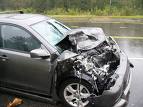 It is now beyond question that the use of automotive safety belts goes a long way to reducing the number of injuries and deaths occasioned by auto accidents. When those belts are combined with the air bags in newer models of motor vehicles, the survivability of motor accidents increases greatly.
It is now beyond question that the use of automotive safety belts goes a long way to reducing the number of injuries and deaths occasioned by auto accidents. When those belts are combined with the air bags in newer models of motor vehicles, the survivability of motor accidents increases greatly.
It is somewhat of an historical anomaly that while auto manufacturers were required by law to install safety belts in new vehicles starting about the middle of the last century, the same laws did not mandate the use of those belts by vehicle occupants. A strong case can and has been made that regardless of statutory mandate, a reasonable person of ordinary prudence would make use of available automotive belts. Since most states now require safety belt use, e.g., Wis. Stat. § 347.48(2m), that argument is no longer necessary. Thus the legislatures have established a standard of care.
However, an example of the lobbying power of the plaintiffs’ personal injury bar may be seen in the fact that many state belt use statutes contain provisions limiting reduction of an auto accident victim’s damages if he or she did not use an available safety belt. For example, Wis. Stat. § 347.48(2m)(g) provides that damages may not be reduced by more than fifteen percent.
Assume a situation in which a biomechanical engineer may convincingly demonstrate that the unbelted passenger’s up-close and personal encounter with a tree along the side of a road would have not occurred if a safety belt had been used. Assume further that all other occupants of the care were belted and sustained no or minor injuries. Nevertheless, the statute would allow the unbelted passenger to recover eighty-five percent of the damages sustained.
Someone once said, possibly me, but more certainly Shakespeare, if the law says that, the law is a ass.

New Hampshire is one of those states where you cannot use the fact that the plaintiff had no seatbelt on against them. It certainly feels like a silly rule, but I guess it comes from the old rule that defendants get plaintiffs as they are. New Hampshire also has one of the lowest percentage seatbelt usage rates in the country. Embarrassing . . . especially when everyone knows that everyone knows that seatbelt usage reduces auto accident injury.
If it can be determined that the injury was solely the result of failing to wear a seat belt, I believe damages should be limited by more than 15 percent. Love the quote at the end btw.